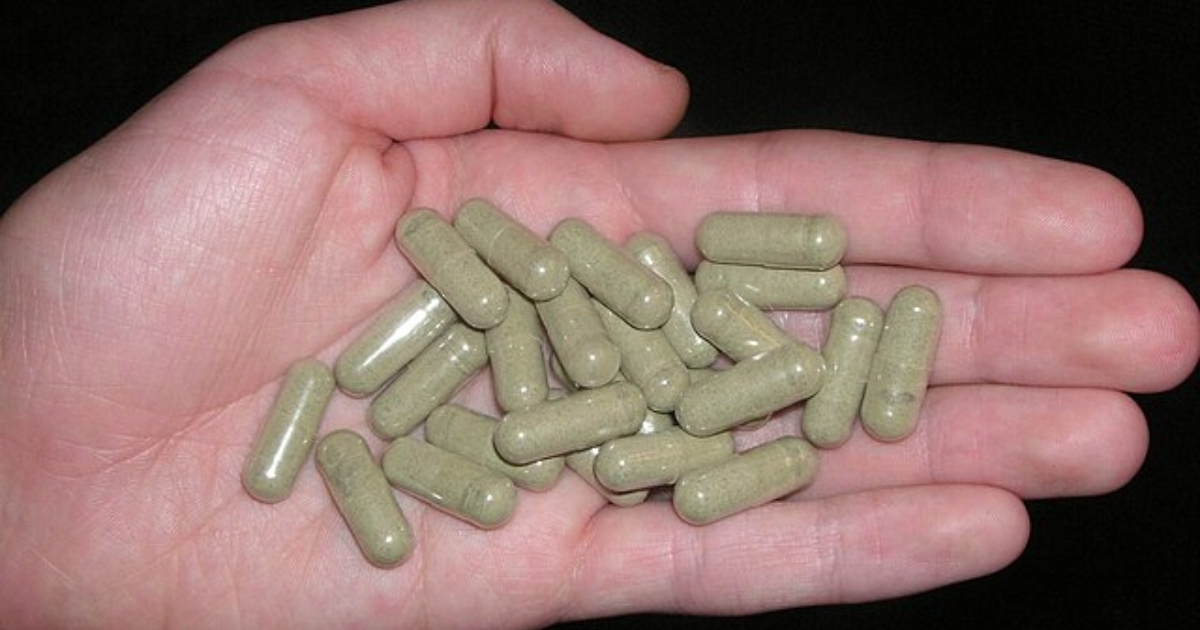Opioid usage and overdose rates in the United States are at all-time highs. One of the main drivers of the current crisis in recent years has been the rise of synthetic opioids, most notably fentanyl, an extremely powerful synthetic opioid used for pain management.
Considered 50 times stronger than heroin and 100 times stronger than morphine, fentanyl has a high potential for abuse, leading to its manufacture and illegal sale. This, combined with it overprescriptions by physicians, caused increasing rates of addiction, overdose, and death. In recent years, a new form of colorful fentanyl has even emerged which raises the risks for children.
In this article we’ll cover fentanyl, including fentanyl and general opioid withdrawal symptoms and how to get help for opioid abuse.
What is Fentanyl?
Fentanyl is a powerful synthetic opioid analgesic that is similar to morphine but is 50 to 100 times more potent. It is a schedule II prescription drug, and it is typically used to treat patients with severe pain or to manage pain after surgery. It is also sometimes used to treat patients with chronic pain who are physically tolerant to other opioids.
In its prescription form, fentanyl goes by Actiq®, Duragesic®, and Sublimaze®.
Fentanyl is also an increasingly common street drug, especially in the form of counterfeit pills made to look like other prescription opioids. These pills are often laced with fentanyl, posing a significant risk to individuals who unknowingly consume them.
Some other facts about fentanyl include:
- Fentanyl and other synthetic opioids are the most commonly implicated drugs in fatal overdoses.
- Illegal fentanyl is primarily manufactured in China and Mexico.
- In 2010, fentanyl was involved in 14.3% of all opioid-related deaths. In 2017, that number had risen to 59.8%.
- US overdose deaths hit an all-time high in 2021. Many of those deaths were driven by fentanyl.
Because of its high potential for abuse, fentanyl is classified under Schedule II of the Controlled Substances Act. It’s seen as a major driver behind the opioid epidemic.
Why Do Opioids Cause Withdrawal?
Opioids, including fentanyl, heroin, and certain prescription painkillers, bind to specific opioid receptors in the brain, spinal cord, and gastrointestinal tract. These receptors are integral to behaviors related to pain and reward.
When opioids attach to these receptors, they not only block pain signals from the brain to the body but also initiate an excessive release of dopamine, a neurotransmitter that regulates the brain’s reward and pleasure centers.
This surge in dopamine contributes to the intense ‘high’ and sense of euphoria associated with opioid use, which often leads to the reinforcement of opioid use behavior to recreate these pleasurable feelings.
Over time, continuous use causes the body to develop a tolerance, necessitating more of the drug to achieve the same effects and leading to dependence, where the brain relies on the drug for dopamine release. This is what causes fentanyl withdrawal symptoms, and is why they are so unpleasant.
Get confidential help from our addiction treatment specialists in Orange County. Call to join our rehab program today!
Call 866-881-1184What Are the Symptoms of Fentanyl Withdrawal?
When those addicted to fentanyl stop taking the drug, they may experience acute and highly unpleasant withdrawal symptoms starting as soon as a few hours after the last dose.
Fentanyl withdrawal symptoms are going to largely be the same as those of opioids generally.
These include:
- Skeletal and muscular discomfort
- Difficulties sleeping
- Diarrhea and vomiting
- Goosebumps and cold flashes
- Enlarged pupils.
- Uncontrollable leg twitching
- Severe cravings
- Increased sensitivity to pain
- Dysphoria (general dissatisfaction with life)
- Irritability
- Yawning
- Runny nose
- Teary eyes
- Anhedonia (inability to feel pleasure)
Some clinical reports and survey data have suggested that fentanyl withdrawal is more severe than heroin withdrawal.
These symptoms can be difficult and frightening to deal with and are the reason many people are unable to quit using fentanyl. Anyone who requires treatment for fentanyl abuse or any opioid detoxification can come to South Coast Behavioral Health for treatment.
How Long Does Fentanyl Withdrawal Last?
This is different for each person but the effects of fentanyl withdrawal generally range between two to ten days.
Please note as well that there is evidence that fentanyl withdrawal begins sooner and ends later than withdrawal from heroin. Given fentanyl’s short half-life, it’s likely that withdrawal symptoms do start earlier.
Here is a general timeline on what you can expect:
- Early Withdrawal (6 to 48 Hours After Last Dose) — The first fentanyl withdrawal symptoms will likely occur between six hours and two days after your last dose. Initial symptoms may include muscle and bone aches, restlessness, anxiety, and insomnia.
- Peak Withdrawal (72 Hours After Last Dose) — Fentanyl withdrawal symptoms tend to be at their worst around this time. Symptoms during this time may include severe insomnia, anxiety, dysphoria, and anhedonia.
- Declining Symptoms (Three Days to One Week After Last Dose) — Your symptoms should be declining after the third day. Most of the time they subside within a week.
Post-Acute Withdrawal Syndrome (Several Weeks to Months After Last Dose)
After physical withdrawal is complete, some people may experience prolonged psychological withdrawal symptoms. This is PAWS, or post-acute withdrawal syndrome.
Symptoms during this phase can include ongoing anxiety, depression, difficulty feeling pleasure (anhedonia), sleep disturbances, and continued cravings. These symptoms can flare up intermittently for weeks, months, or even longer, depending on individual circumstances.
Who Can Help With Fentanyl Detox?
As with any substance abuse disorder, treatment for fentanyl addiction must start with detoxification, followed by residential inpatient treatment. This way, trained medical professionals can help manage the fentanyl withdrawal symptoms. Yes, people can die if they don’t get help for an opioid addiction. There are management strategies you can use to help turn your life around.
Research has shown that this combined approach is the most effective treatment modality for Opioid Use Disorder (OUD), as it treats the whole person – a core tenet of South Coast Behavioral Health’s approach to treatment.
Looking for quality substance abuse treatment that’s also affordable? South Coast accepts most major insurance providers. Get a free insurance benefits check now.
Check Your CoverageFentanyl Withdrawal Help at South Coast Behavioral Health
Quitting a drug like fentanyl can be difficult and even dangerous without proper support. We can help with the diagnosis or treatment of opioid use disorders.
If you struggle with fentanyl addiction, South Coast Behavioral Health is here to help. We provide compassionate and holistic treatment for alcohol and drug addiction in Southern California.
Before starting treatment, you’ll undergo a medical detox. While clearing the drug from your system, medications may be given to manage severe withdrawal symptoms. This allows you to focus on recovery with fewer temptations, and gives you and your family the peace of mind you need during this time.
At South Coast, we take pride in offering care that is closely tailored to specific issues. To that end, we offer gender-specific detox programs, with medical detox for men in Irvine, CA, and medical detox for women in Huntington Beach, CA.
After detoxing, proper treatment can begin.
Treatment for substance abuse takes place along an entire spectrum of care. Along that entire spectrum are various behavioral therapies, support groups, and the use of medically-assisted treatment (MAT).
These levels of treatment are, in order, as follows:
Residential Treatment in California
After completing medical detox, you’ll receive inpatient treatment in Orange County California. There, you’ll receive medically-assisted treatment and dual diagnosis treatment to deal with any cravings or co-occurring mental health issues you may be battling. We also offer residential treatment facilities in Costa Mesa, Irvine, and Huntington Beach for those who desire gender-specific treatment. There, patients get round-the-clock medical attention and monitoring while living at the center full-time.
In addition to individual and group counseling and medication management, you’ll also have access to leisure activities and family support services.
Partial Hospitalization in California
Most clients start substance abuse treatment with South Coast in our residential treatment program. After completing that, many desire something that still provides structure and support, but with extra space and time to oneself. For that, we offer Partial Hospitalization in Newport Beach.
A step down from inpatient care but with more structure than conventional outpatient rehab, partial hospitalization offers a good balance for those looking to ease back into normal life. Clients can receive care five to seven days a week for several hours each day, returning to their homes in the evening.
This way, they can recover without putting their daily lives completely on hold, receiving intense therapeutic interventions like group and individual therapy, skill development, and medication management as necessary.
Intensive Outpatient Treatment in California
For those leaving inpatient residential treatment or partial hospitalization, intensive outpatient programs (IOP) are yet another gradual step forward on the road to recovery.
With a focus on group therapy, individual counseling, and education, clients undergoing Intensive Outpatient Treatment in Newport Beach can meet three to five days a week. Each session lasts three hours.
This level of care requires the least amount of attendance at a facility.
Start Today
Addiction is a serious disease, but you can get better with medical supervision. Sobriety is possible. We help save lives through our opioid dependency programs. Our recovery center has skilled opioid and opiate withdrawal management staff ready to help anyone with addiction treatment.
If you or a loved one are struggling with fentanyl addiction but wonder how long addiction counseling takes or have other questions, call us at 866-881-1184. Our highly qualified staff will be happy to help give you an idea of what to expect from your addiction recovery timeline, help verify your insurance, and assist with any other questions you may have about substance abuse and addiction.










